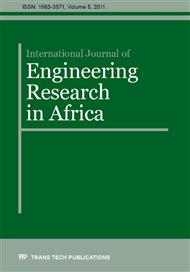[1]
F.O., Neves, S.T., Button, C., Caminaga and F.C., Gentile, Numerical and experimental analysis of tube drawing with a fixed plug, Journal of the Brazilian Society of Mech. Sci. & Eng. 27, issue 4, (2005), 426 – 431.
DOI: 10.1590/s1678-58782005000400011
Google Scholar
[2]
S. H. Hsiang and C. S. Liao: J. Materials Processing Technology, 63 (1997), 254-259.
Google Scholar
[3]
E. M . Rubio Analytical methods application to the study of tube drawing processes with fixed conical inner plug: Slab and Upper bound Methods, Journal of Achievements in Materials and Manufacturing Engineering, 14(12), (2006), 119 – 130.
Google Scholar
[4]
N. Alexandrova, Analytical treatment of tube drawing with a mandrel, Journal of Mechanical Engineering Science, 215(6), (2001), 581 – 589.
Google Scholar
[5]
L.S. Bayoumi, Cold drawing of regular polygonal tubular sections from round tubes, International Journal of Mechanical Science, 43(11), (2001), 2541 – 2553.
DOI: 10.1016/s0020-7403(01)00056-x
Google Scholar
[6]
D.W. Zhao, H. J, Du, G. Wang, J. Liu and G.D. Wang, (2009), An analytical solution for tube sinking by strain rate vector inner product integration, Journal of Materials Processing Technology, 209(1), (2009) 408 – 415.
DOI: 10.1016/j.jmatprotec.2008.02.011
Google Scholar
[7]
K. K. Um and D.N. Lee, An Upper Bound Solution of Tube Drawing, Journal of Material Processing Technology. 63(1-3) (1997) 43-48.
Google Scholar
[8]
Q.H. Bui, R. Bihamta, M. Guillot., G. D'Amours. A., Rahem and M. Fafard, Investigation of the formability limit of aluminum tubes drawn with variable wall thickness, Journal of Material Processing Technology. 211(3) (2011) 402-414.
DOI: 10.1016/j.jmatprotec.2010.10.016
Google Scholar
[9]
M.I., Panhwar, R., Crampton and M.S.J., Hashmi, Analysis of the tube sinking process based on non Newtonian characteristics of the fluid medium, Journal of Materials Processing Technology. 21(2) (1990) 156 – 175.
DOI: 10.1016/0924-0136(90)90004-e
Google Scholar
[10]
H. Basic, Friction models comparison in finite volume method simulation of bulk metal forming technologies, Journal for Technology of Plasticity, 33(1-2), (2008), 112-123.
Google Scholar
[11]
F. Paulo, J.C. Pimenta, J.C., and A. Jorge, Journal Bearings Subjected to Dynamic loads: The Analytical Mobility Method, Mecanica Experimental. 13 (2006) 115 – 127.
Google Scholar
[12]
G. W Rowe. Elements of Metalworking Theory, Edward Arnold publishers, London (1979).
Google Scholar


